When you hear the words “Big 5,” you probably think about the top five must-see animals in Africa.
This post contains affiliate links for which Expedition Wildlife may receive a commission (where applicable) at no additional cost to you.
Safari-goers have other things to consider for their trip planning, including the ethics of their chosen guide.
Millions of tourists flock to the African continent every year to see the stunning wildlife found there.
Many countries in Africa have endemic animals, or those found only in specific parts of the world, including many threatened and endangered species.
From vast, open savannah, to dense rainforests, to expansive deserts, Africa is filled with wildlife that people dream to see.
Let’s delve into what the Big 5 is and how conservationists, photographers, and researchers are working to re-coin the term as the “New Big 5.”
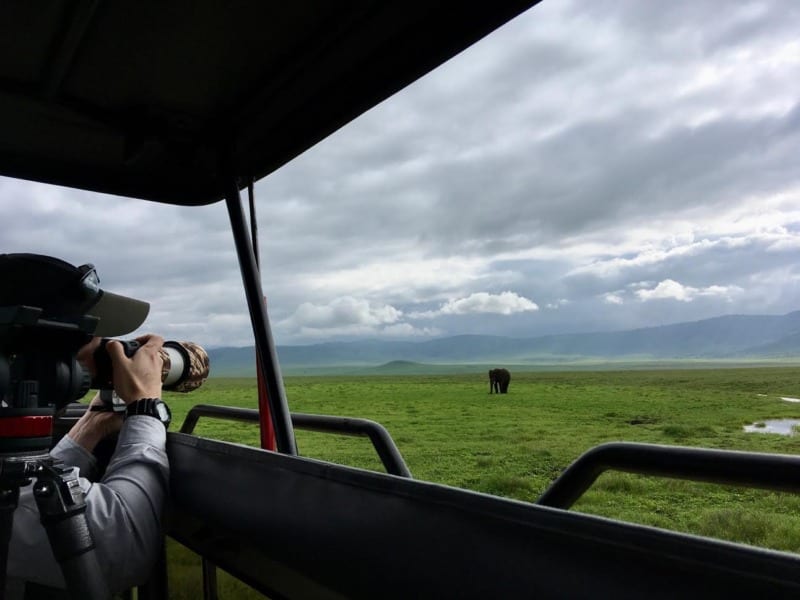
Photographing the Big 5 and “capturing” them eternally in a photo is much better for wildlife conservation. Photo by Christa Rolls
Where does the term “Big Five” come from?
Historically, the term was coined in the 1800’s by big-game hunters, referring to dangerous and difficult-to-catch animals. THE five are the rhinoceros, elephant, leopard, lion, and Cape buffalo.
Even today, permits are sold to trophy hunters willing to pay big bucks to take down one of these magnificent animals.
While the practice of bagging big game continues, efforts are being made to reduce, discourage, and eliminate trophy hunting
For example, the ProTECT Act (Prohibiting Threatened and Endangered Creature Trophies Act), introduced to the United States House of Representatives in October 2019, is currently under review. If passed, threatened and endangered species would be prohibited from being imported into the U.S. This significantly reduces the trophy hunting market.
For those in the United States, feel free to contact your state representatives to show your support for passing the ProTECT Act.
Evolution of the Big Five: The “New Big 5”
While the background behind the Big 5 is sobering, the term is slowly evolving.
To the millions of tourists who visit Africa to see the wildlife, the Big 5 is a shortlist of some of the top animals they hope to spot on their trip.
Those tourism dollars pump money into the local economies and conservation programs on the ground. Additionally, when people see these stunning creatures in person, the desire to protect them increases.
And while the big five might be a huge draw for people, many other animals are also on visitors’ must-see list.
A new movement, started by hundreds of wildlife photographers and conservationists, is now asking the public to consider a “New Big 5.”
This initiative allows tourists to embrace the Big Five on a larger scale, by transforming the meaning into using a camera to “shoot” these threatened and endangered animals rather than a gun.
READ NEXT | African Safari Checklist: What to know before you go
About the Traditional Big Five animals
Rhinoceros
There are five species of rhinoceros, two of which are found in Africa and three in Asia.
The Black Rhino (Diceros bicornis) and the White Rhino (Ceratotherium simum) are those inhabiting Africa.
Black Rhino
IUCN Red List: Critically Endangered
Population: Approximately 5,500 animals in the wild
White Rhino
IUCN Red List: Near Threatened
Population: Approximately 18,000 animals in the wild
Rhinos are under threat primarily due to poaching for their horns. Traditionally, rhino horns are believed to have healing powers, so marketed horns can fetch a hefty profit on the black market.
More recently, they are under threat from habitat loss, as their primary savannah and grassland living space is increasingly more developed.
For more information about rhinos, and rhino conservation work and research, visit the International Rhino Foundation’s website.
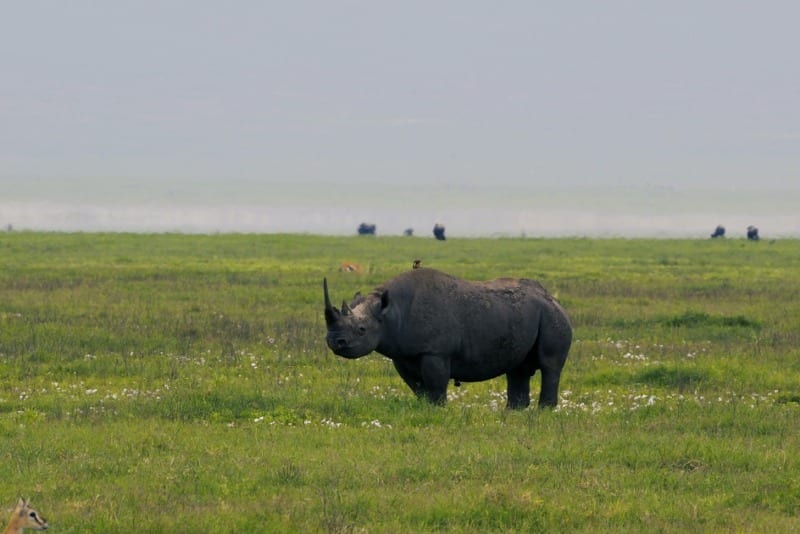
A Black Rhino is spotted in the distance, mingling with other wildlife, in Ngorongoro Crater Conservation Area, Tanzania. Photo by Nathan Rolls
Elephant
Elephants are the largest land mammal in the world and are beloved by many.
The African Elephant (Loxodonta africana) and the Asian Elephant (Elephas maximus) are the two primary elephant species, including multiple subspecies.
IUCN Red List: Vulnerable
Population: Approximately 15,000 animals in the wild (African Elephant)
Elephants are considered a keystone species, meaning they shape and contribute to the larger ecosystem in a way that supports other animals.
These enormous creatures require a lot of space to live and thrive. With human population expansion and development, their habitats are dwindling.
Additionally, a huge threat to elephants is poaching for their ivory tusks. Both male and female elephants grow large tusks for defense and gathering food. Their ivory tusks have long been a symbol commodity of wealth, where people pay lots of money to have ivory items.
For more information about elephants and elephant conservation, visit the International Elephant Foundation’s website.
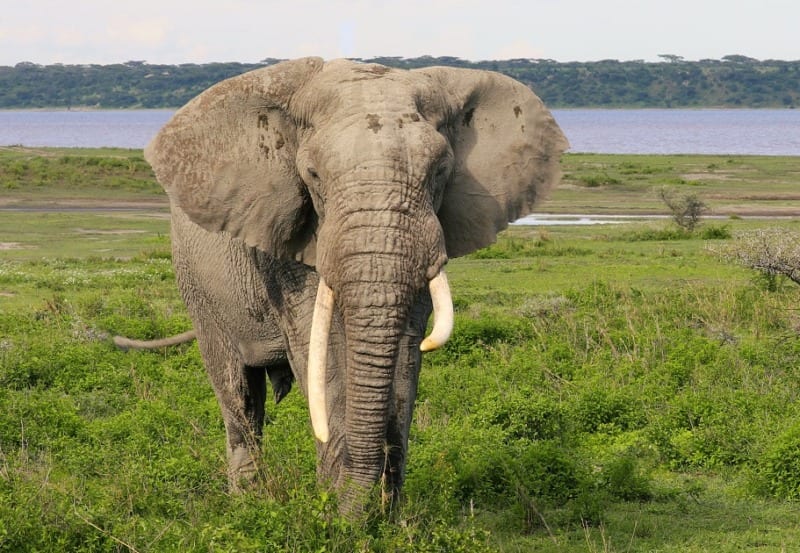
This stunning African Elephant lives in south Serengeti Tanzania. Here, he feasts on tasty greens near the river. Photo by Nathan Rolls
Lion
The Lion (Panthera leo) is the iconic African big cat, found mostly in the grassland and savannah habitats of Sub-Saharan Africa. One small subspecies population of Lion lives in the Indian state of Gujarat.
IUCN Red List: Vulnerable
Population: Approximately 20,000 animals in the wild.
Did you know the recent Lion King film spurred a global conservation campaign to protect lions?
These “kings” of their domain may be one of the most sought after animals to spot on safari, but they’re also hugely popular in the illegal wildlife trade and the big-game poaching circuit.
Habitat loss and human-wildlife conflict are the two other main factors affecting lion populations.
For more information about lions and their conservation status, visit Panthera’s website.
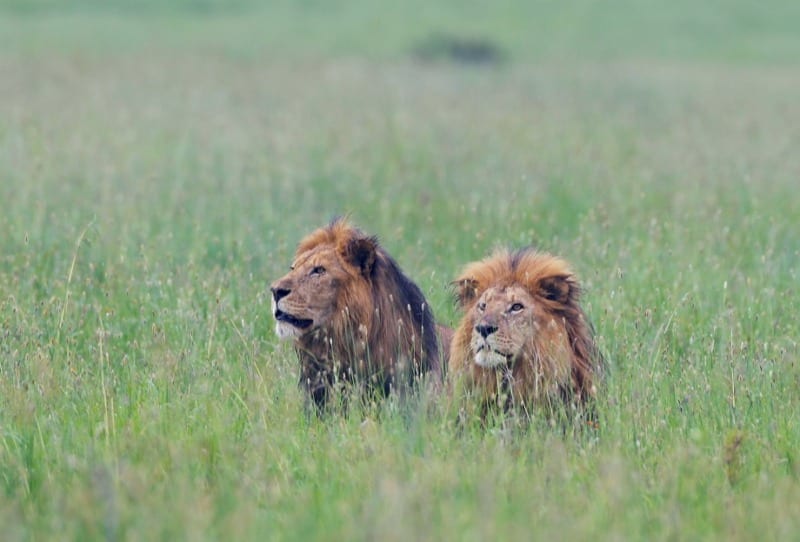
Lions are a pleasure to watch in the wild, as their interactions with their pride-mates make for an enriching experience. Photo by Nathan Rolls
Leopard
Leopards (Panthera pardus) are the most adaptable of the big cats, living in a wide range of habitats throughout Africa and Asia. However, they’re also the most likely to be killed because of their highly sought-after fur coat.
Nine different leopard subspecies exist, with the African Leopard (Panthera pardus pardus) the only subspecies living in Africa. The other eight live in various habitats in Asia.
IUCN Red List: Vulnerable
Population: Unknown. Due to the expansive range, and elusiveness, of leopards, their current worldwide population is unknown. However, efforts are currently underway to map leopard populations to track their status.
Leopards are at risk of population decline because of habitat loss and human-wildlife conflict with ranchers and herders.
For more information about leopards and their conservation status, visit Panthera’s website.
READ NEXT | Cheetah Feeding Behavior and Our Cheetah Hunt Experience
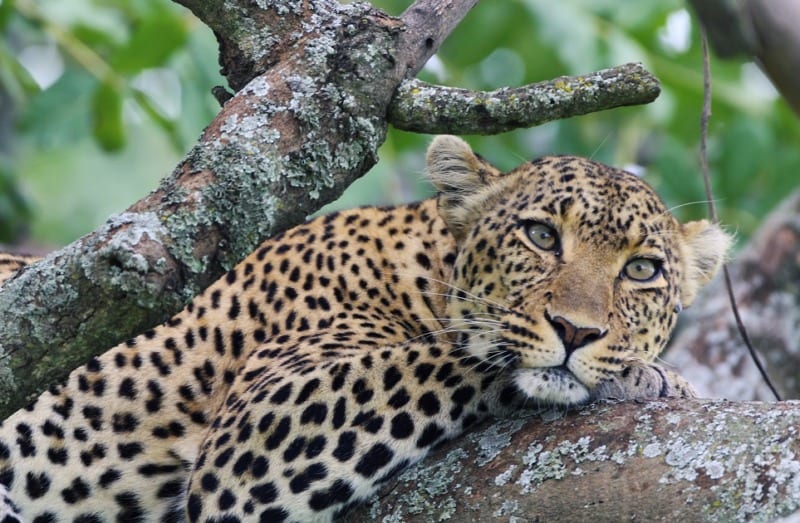
Spotting leopards in the wild is a difficult task, but with the right guide, it’s not impossible. This beautiful mother leopard enjoys some downtime with her cub in a sausage tree. Photo by Nathan Rolls
Cape Buffalo
Surprisingly, the Cape or African Buffalo (Syncerus caffer) is considered one of the most dangerous animals in Africa.
Their notoriously bad temper (and people underestimating their strength) means they should be avoided if you’re ever outside on foot.
It’s this “thrill” that landed them on the original Big 5 list, as trophy hunters aimed to catch the most dangerous of all animals.
IUCN Red List: Near Threatened
Population: Approximately 570,000 animals in the wild
The Cape buffalo’s range is quite expansive, and as a whole, they are adaptable animals.
While 570,000 might seem like a large number compared to the other Big Five, they are on a projected population decline trajectory that will lead them closer to threatened status if no action is taken.
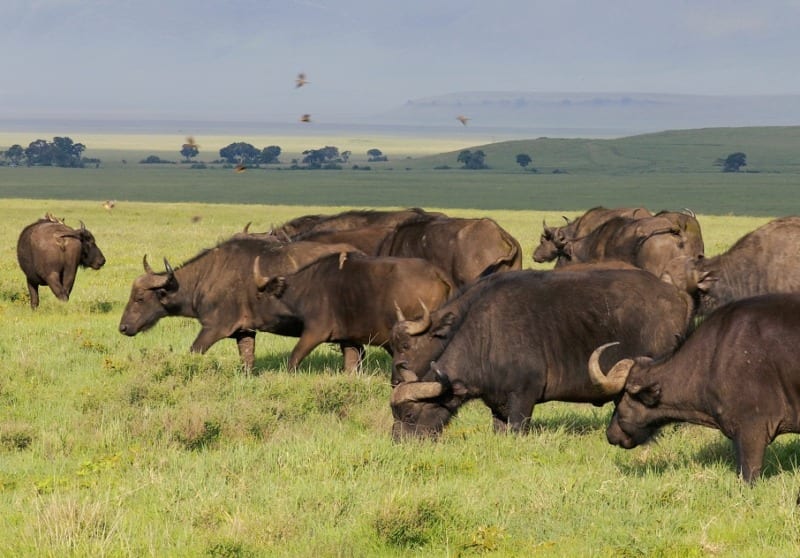
The sheer size of the Cape buffalo is impressive, so seeing them in large herds like this is incredible. Photo by Nathan Rolls
What are the proposed New Big 5?
We, the public, have the opportunity to vote on the New Big 5.
These proposed animals only focus on land animals and do not yet focus on marine life or birds.
Overall, though, they’re a shortlist of animals that photographers love to seek out to get an image of.
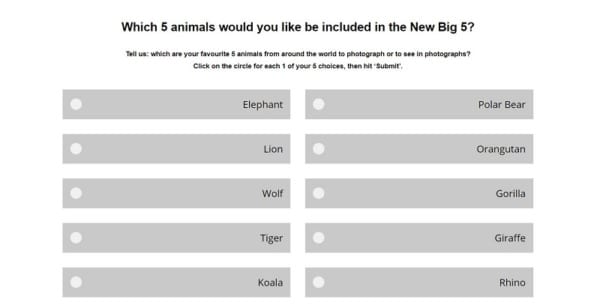
As you can see, some of the animals are already on the traditional Big 5 list, and of course, are being considered as the New, or Photography, Big 5. Image from Newbig5.com
There are 46 possible selections and some are more open-ended. For example, “deer” is an option, but there are over 50 different animals classified as deer.
Which five will we be selecting? While every animal is a joy to photograph, some are incredibly challenging to capture on film or in images. To us, this makes it even more rewarding when you finally get to see them in the wild and have the opportunity to photograph them.
The Komodo Dragon, for example, is the largest lizard on Earth and only lives on a small subset of islands in Indonesia. How incredible to watch and enjoy photographing such a creature!
Also, the Snow Leopard is nicknamed “the ghost cat” because of their elusiveness and the difficulty of spotting them in the remote mountains they inhabit. Embarking on a journey to better understand and photograph these stunning animals would be epic.
Go onto the New Big 5 website, check out their podcast and blog content, and VOTE for your top 5 animals to photograph! Spread the word, and let’s work together to make trophy hunting a thing of the past.
Which animals will you choose? Let us know in the comments!
Best,
Christa and Nathan
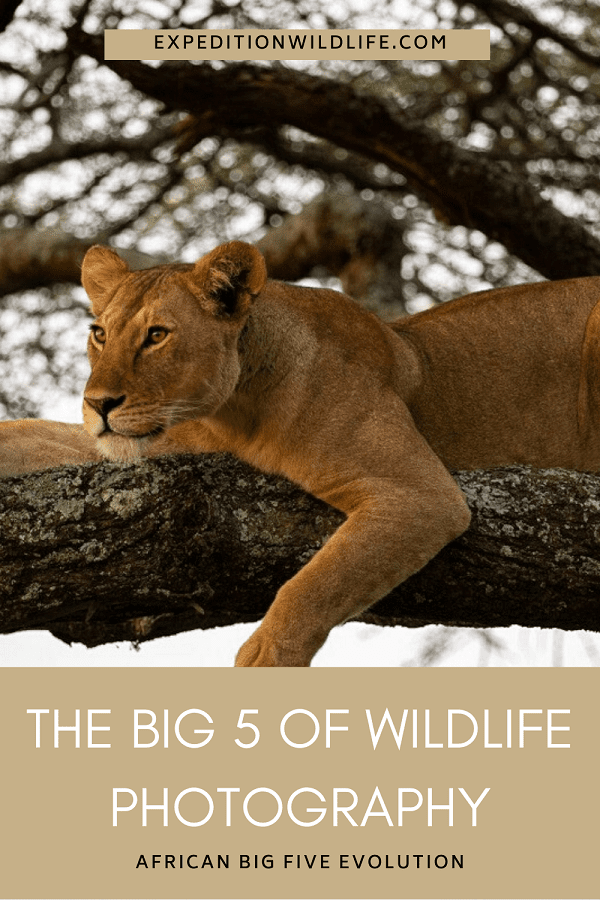

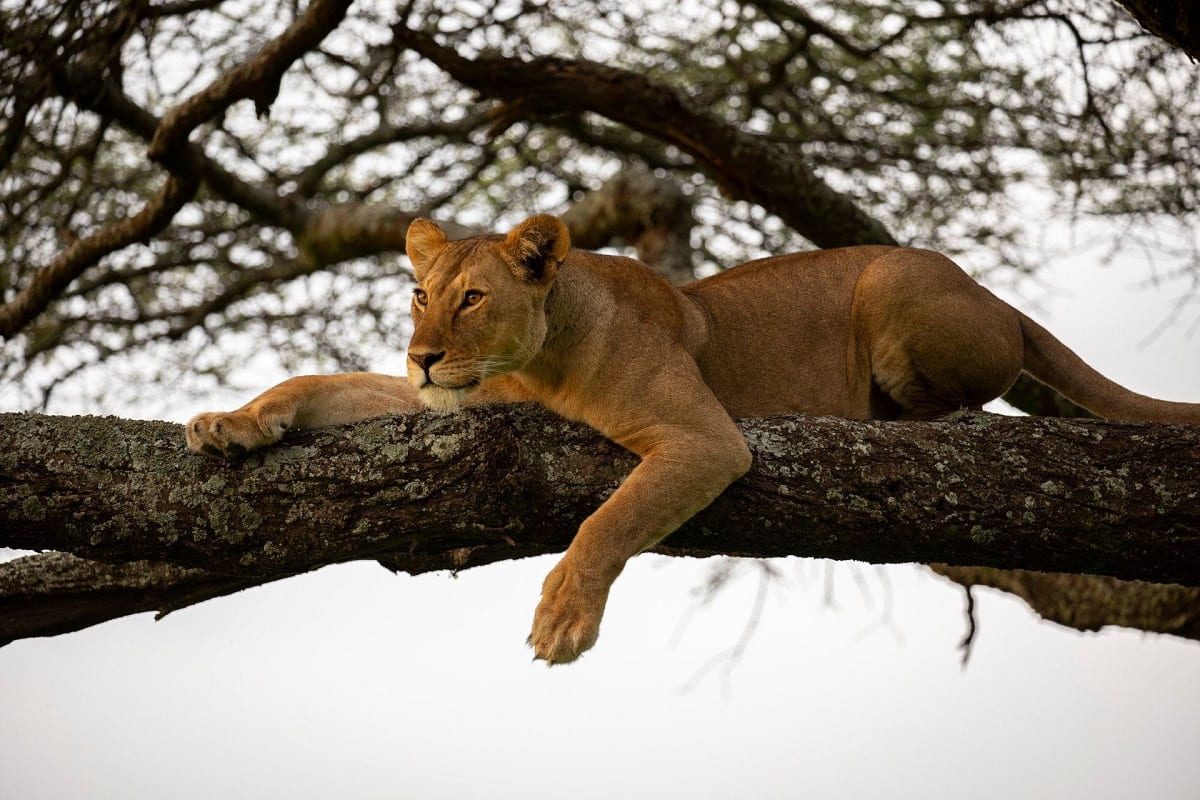

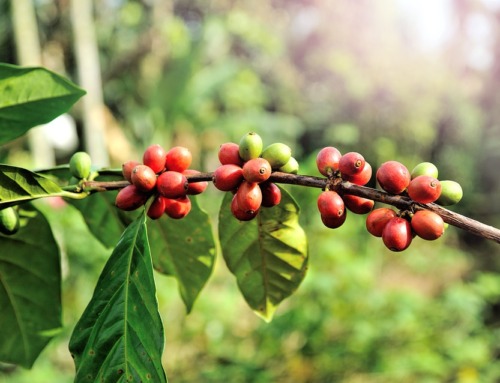
Great! This got me thinking.
My 5 list: Tiger, elephant, gorilla, polar bear, brown bear … and giraffe, moose, rhino … I could go on.
If the birds were included I would love to get a shot of some king penguins!
Hey Cecilie, I love that list! Definitely, all of these animals have their own unique and wonderful value. King Penguins are 100% on my photography bucket list, too!